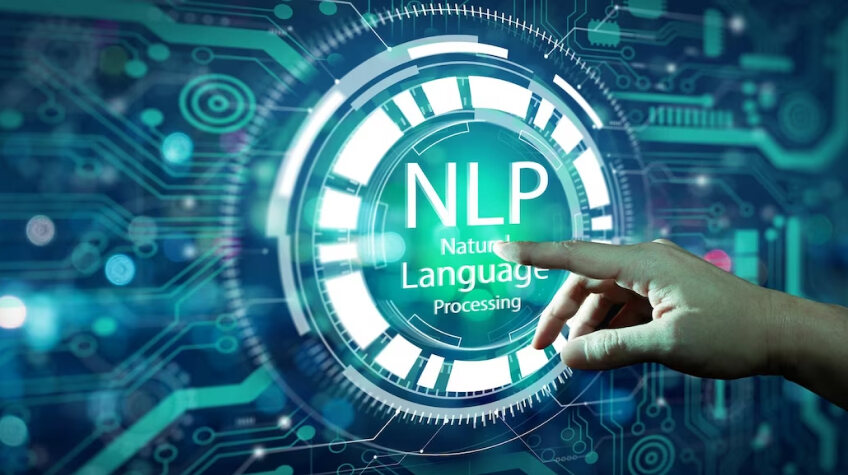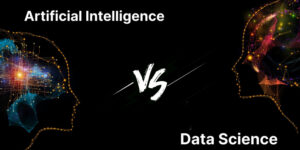
Natural Language Processing (NLP) is an incredible branch of artificial intelligence that allows machines to grasp, interpret, and generate human language quickly! By bridging the gap between human communication and computational understanding, NLP empowers the creation of awe-inspiring applications that can process, analyze, and respond to vast amounts of textual data!
From sentiment analysis and machine translation to chatbots and speech recognition, NLP finds its way into various domains, revolutionizing customer support, virtual assistants, healthcare, and social media! With its continuous advancements, NLP keeps raising the bar for human-computer interactions, making technology a delight to interact with!
Natural Language Processing Understanding
Natural Language Processing (NLP) is an AI specialization that encourages machines to comprehend, interpret, and manipulate human language. NLP processes vast textual data by creating algorithms and models, allowing computers to understand human expressions’ meaning, context, and intent.
NLP has driven notable progress in sentiment analysis, chatbots, language translation, and speech recognition. By bridging human-computer communication, NLP transforms human-computer interaction, revolutionizing how we interact with technology daily.
What are the Benefits of NLP?
Natural Language Processing (NLP) offers numerous advantages that have revolutionized human-technology interactions and text management. Firstly, NLP enhances the user experience by enabling more natural communication through voice-activated assistants and chatbots. It streamlines information retrieval and analysis, making extracting insights from vast text data easier. NLP’s sentiment analysis aids businesses in gauging customer feedback and making data-driven decisions.
Moreover, NLP has broken language barriers, facilitating seamless language translation, cross-lingual communication and fostering global collaboration. In the healthcare industry, NLP’s clinical text analysis and disease detection have advanced medical research and improved patient care. NLP drives innovation across various sectors, making it an integral technology in the current world.
Top 15 Natural Language Processing Examples and Applications
1. Spell Checking
Spell checking is a fundamental aspect of Natural Language Processing (NLP) that identifies and rectifies misspelled words within a text. It plays a vital role in ensuring written content’s precision and readability, whether it’s in documents, emails, or online platforms. Spell-checking algorithms scrutinize the input text, cross-referencing each word against a pre-existing lexicon or dictionary.
When an incorrect spelling is detected, the algorithm suggests a list of potential corrections based on similarity metrics and contextual information. Through the widespread adoption of spell-checking tools in word processors, web browsers, and various applications, NLP has significantly elevated written communication’s overall quality and professionalism in today’s digital landscape.
2. Text Segmentation
Text segmentation is a fundamental process in Natural Language Processing (NLP) that involves dividing continuous text into meaningful units. Text segmentation aims to identify and extract relevant information from a given text, making it easier for NLP algorithms to comprehend and analyze the content.
Segmentation methods vary based on the type of text and the desired output, ranging from sentence and paragraph segmentation to more complex tasks like topic extraction and entity recognition. By segmenting text, NLP systems can better understand the structure and context, enabling more accurate and efficient language processing for various applications, such as text summarization, information retrieval, and sentiment analysis.
3. Sentiment Analysis
Sentiment analysis, or opinion mining, is a robust application of Natural Language Processing (NLP) to determine a text’s emotional tone and attitude. Sentiment analysis algorithms can analyze words, phrases, and context to identify positive, negative, or neutral sentiments, providing valuable insights into the sentiment of individuals or groups toward specific topics, products, or services.
This technology finds wide-ranging applications in market research, brand reputation management, social media monitoring, and customer feedback analysis. Organizations utilize sentiment analysis to make informed decisions, understand public perception, and improve their products or services based on customer sentiments, ultimately enhancing overall user experience and satisfaction.
4. Named Entity Recognition (NER)
Named Entity Recognition (NER) is a crucial Natural Language Processing (NLP) technique that identifies and classifies named entities in a text, including people, organizations, locations, dates, and specific terms. NER algorithms employ machine learning and linguistic patterns to recognize these entities and categorize them into predefined classes.
By automating this process, NER plays a vital function in different applications, like information recovery, document summarization, and knowledge graph construction. It aids in extracting valuable insights from unstructured text data, facilitating efficient data analysis, and enabling more sophisticated language understanding, which is essential for powering advanced NLP tasks and enhancing the accuracy and usefulness of various AI-driven applications.
5. Machine Translation
Machine Translation is a revolutionary application of Natural Language Processing (NLP) that aims to translate text or speech
from one vocabulary to another automatically. This technology utilizes sophisticated algorithms, such as neural machine translation models, to analyze the syntactic and semantic structures of the source language and generate equivalent content in the target language.
Machine Translation has profoundly impacted global communication, breaking down language barriers and enabling seamless cross-cultural interactions in various domains, including business, education, and diplomacy. While it continues to improve, challenges such as handling nuances, idiomatic expressions, and context-specific meanings remain, making ongoing research and development critical for achieving even more accurate and natural translations.
6. Online Search Engines
Online search engines are an excellent example of how Natural Language Processing (NLP) is employed to understand user queries and provide relevant search results. NLP algorithms process the natural language input, deciphering the intent behind the search terms, and then retrieve web pages that match the user’s request. Techniques such as entity recognition help identify specific entities like locations, people, or organizations mentioned in the search queries, enabling more accurate results.
Moreover, sentiment analysis may be applied to understand the user’s sentiment and refine search results accordingly. By employing NLP, search engines continuously enhance their ability to understand user intent and deliver more personalized and contextually appropriate search outcomes, making the search experience more efficient and satisfying.
7. Email Filters
Email filters are a prime example of how Natural Language Processing (NLP) is applied to enhance email management. NLP algorithms can analyze the content of incoming emails, classifying them into different categories like spam, promotions, or personal messages. By leveraging techniques such as text classification and named entity recognition, the email filter can identify specific patterns or keywords commonly found in spam emails, helping to block them from reaching the user’s inbox.
Additionally, NLP can extract essential information, such as dates and events, from the email content to prioritize and organize messages effectively. Through NLP-powered email filters, users experience improved email organization, reduced spam clutter, and more streamlined email management, saving valuable time and effort.
8. Predictive Text and Autocorrect
Predictive text and autocorrect are practical applications of Natural Language Processing (NLP) that have transformed how we type and communicate on digital devices. NLP algorithms in these systems analyze the context and patterns in users’ typing behavior to predict the next word or phrase they intend to type.
By suggesting relevant options in real-time, users experience faster and more efficient typing, reducing errors and saving time. Autocorrect further leverages NLP to automatically correct misspelled words, making written communication smoother and error-free. With continuous learning capabilities, predictive text and autocorrect systems adapt to individual writing styles, constantly improving accuracy and providing a seamless and user-friendly typing experience.
9. Chatbots
Chatbots are a prominent NLP application that simulates human-like conversations and interacts with users conversationally. Powered by Natural Language Processing (NLP) algorithms, chatbots can understand user queries, process the intent behind the text, and generate appropriate responses. NLP enables chatbots to recognize entities, extract critical information, and handle complex language structures, making them more effective in addressing user needs.
Advanced chatbots utilize sentiment analysis to gauge user emotions and respond with empathy. Chatbots improve their accuracy and relevance by continually learning from interactions, delivering personalized and efficient support in customer service, virtual assistants, and various other domains, enhancing overall user experiences, and automating routine tasks effectively.
10. Smart Assistants
Smart assistants are exemplary Natural Language Processing (NLP) applications that utilize advanced algorithms to comprehend and reply to user voice commands and questions. Artificial intelligence and NLP models allow smart assistants like Siri, Alexa, and Google Assistant to comprehend natural language, recognize speech patterns, and extract relevant information to provide accurate and contextual responses.
NLP enables them to handle various duties, such as placing reminders, responding to queries, managing smart home devices, and engaging in casual conversations. Through continuous learning and improvement, these smart assistants offer personalized and seamless interactions, making them indispensable virtual companions that enhance productivity and convenience in our daily lives.
11. Survey Analytics
Survey analytics is a valuable application of Natural Language Processing (NLP) that aids in extracting insights from textual survey responses. By using NLP algorithms, survey analytics can process unstructured text data, identify recurring themes, and classify sentiments expressed by respondents. NLP helps researchers to categorize and quantify open-ended responses, transforming them into structured and actionable data.
It enables the automated analysis of large-scale surveys, saving time and resources while providing a deeper understanding of participants’ opinions and preferences. With NLP-driven survey analytics, businesses, researchers, and organizations gain valuable insights to make data-driven decisions, tailor their offerings, and enhance customer satisfaction based on the sentiments and feedback shared by their audience.
12. Social Media Monitoring
Social media monitoring is a prominent NLP application that tracks and analyzes conversations on various social media platforms. NLP algorithms can process large volumes of unstructured textual data, extracting valuable insights and sentiments from posts, comments, and mentions. Sentiment analysis is a critical component that helps gauge users’ overall sentiment towards specific brands, products, or events, enabling businesses to measure customer satisfaction and brand reputation.
Named entity recognition allows identifying influential individuals or organizations within social media discussions. Social media monitoring powered by NLP aids in crisis management, market research, and reputation management, helping businesses stay responsive and make data-driven decisions based on real-time social media trends and sentiments.
13. Text-to-Speech (TTS)
Text-to-Speech (TTS) is an innovative NLP application that transforms written text into spoken audio outcomes. Using sophisticated algorithms, TTS systems analyze the input text, interpret its linguistic structure, and generate corresponding speech with natural intonation and pronunciation. NLP enables TTS to handle diverse languages and accents, adapt to different contexts, and convey emotions effectively.
This technology finds broad applications in various fields, from accessibility solutions for visually impaired individuals to voice-enabled virtual assistants and navigation systems. TTS continues to advance, employing deep learning and neural networks to produce more lifelike and expressive speech, making human-computer interaction more seamless and enriching the overall user experience.
14. Intent Detection
Intent detection is a crucial NLP task that involves identifying the underlying purpose or intention behind a user’s input, typically in a text or voice command. Using machine learning techniques, intent detection algorithms analyze the context and structure of the user’s query to determine its intended action.
For example, in a virtual assistant application, intent detection would ascertain whether the user’s command is to set an alarm, make a call, or search for information. Accurate intent detection is essential for providing relevant and contextually appropriate responses, ensuring the system effectively understands and fulfills the user’s needs.
15. Opinion Mining
Opinion mining, also known as sentiment analysis, is a powerful NLP technique that aims to extract and analyze subjective information from text, such as reviews, social media posts, and customer feedback. By utilizing machine learning algorithms, opinion mining can determine the text’s degree of positivity, negativity, or neutrality.
This technology finds extensive applications in various industries, allowing businesses to understand customers’ thoughts about their products, track their brand reputation, and make data-driven decisions to enhance customer satisfaction. Opinion mining enables organizations to acquire valuable understandings of customer preferences, enhance customer experience, and respond effectively to feedback.
16. Language Identification
Language Identification is a fundamental application of Natural Language Processing (NLP) that involves specifying the language of a provided text or speech input. Using statistical techniques, N-grams, and machine learning algorithms, language identification systems can analyze the patterns and linguistic features unique to each language. This allows them to detect and classify text or speech accurately into their respective language categories.
Language identification finds widespread usage in various domains, such as multilingual customer support, web content filtering, and internationalization of software applications. By automatically identifying languages, NLP-powered language identification systems streamline communication and ensure accurate multilingual data processing, making them an essential component of modern language-centric applications.
In conclusion, Natural Language Processing (NLP) revolutionized how we interact with computers, harnessing language’s power for numerous applications. From sentiment analysis and text summarization to machine translation and chatbots, NLP continues to redefine human-computer interaction.
Through advanced algorithms and machine learning, NLP systems have become more sophisticated in understanding context, recognizing entities, and extracting insights from unstructured text data. As NLP research and development progress, we can expect even more innovative and impactful applications, empowering businesses, improving customer experiences, and driving further advancements in artificial intelligence.






